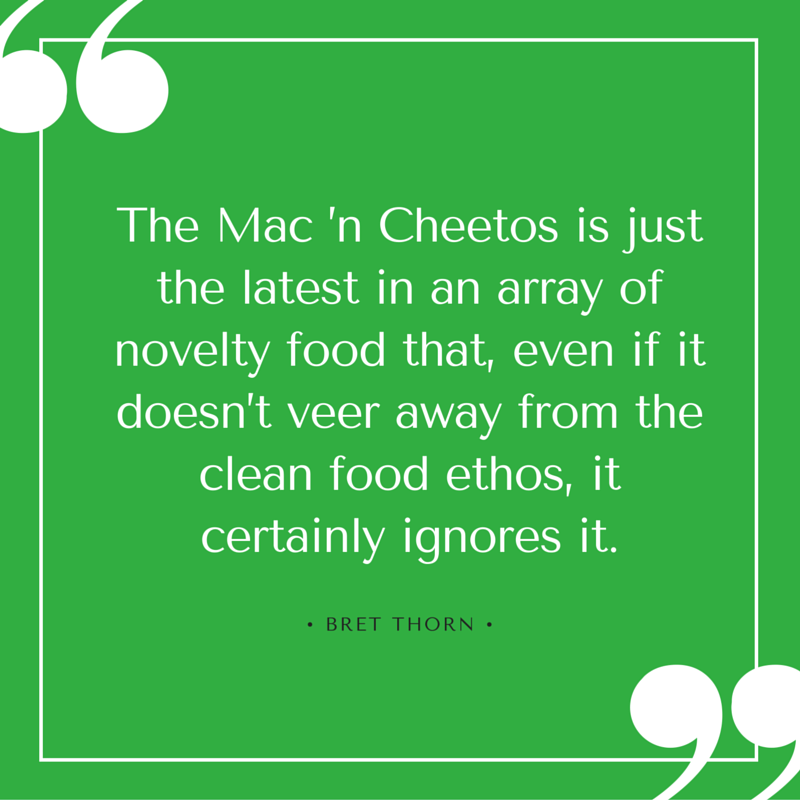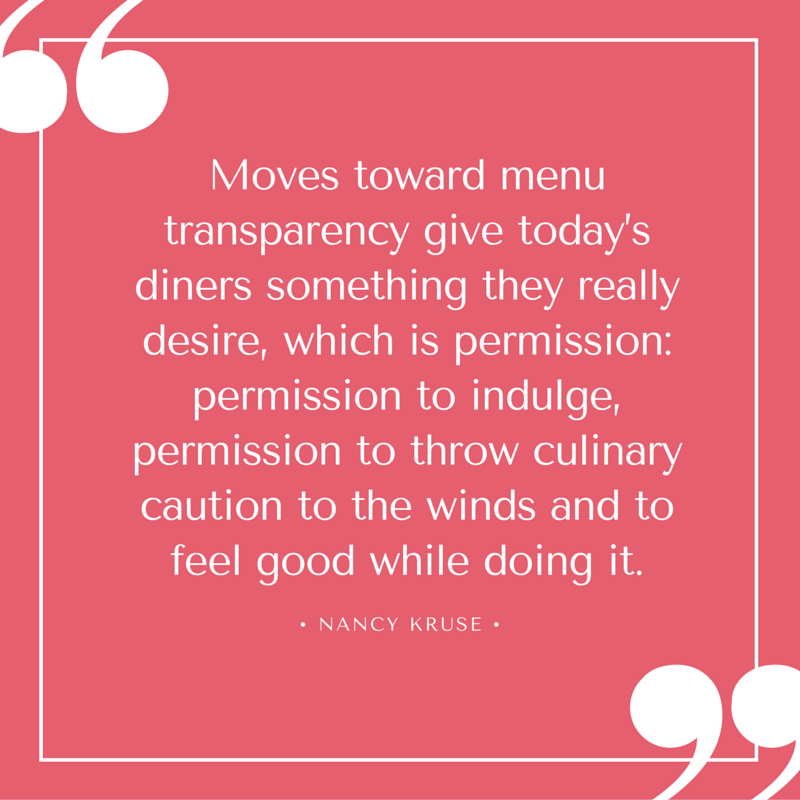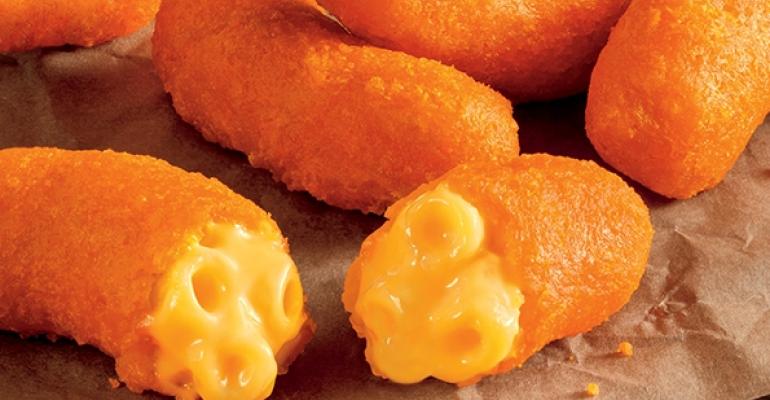
Nancy, I’d like to discuss something of a paradox with you.
As you know, American consumers talk a lot about wanting to know where their food comes from. They want it to be free of preservatives and for it to be wholesome in some intangible sort of way. They indicate a desire for it to be better for them somehow — maybe not actually more nutritious or lower in calories, but at least psychically better for them. Maybe the food doesn’t have scary sounding things in it like artificial color, or maybe the animals were treated in a way that was more humane, or possibly raised in a way that was more natural, whatever that means.
I’m a city mouse, Nancy, and although I’m fine with visiting the wilderness from time to time, it seems to me that a natural state is one in which everything is trying to kill and eat everything else. I’d rather have civilization.
But I digress.
So we have this national movement toward more whole, natural food. It’s by no means elitist anymore: Chains like Carl’s Jr./Hardee’s and Papa John’s have moved toward more natural ingredients, and at the end of June Chili’s rolled out grass-fed burgers raised without added hormones or antibiotics, available as any burger for $1 extra.
But then, Nancy, we have the Mac n’ Cheetos.
Thorn and Kruse discuss the appeal of extreme foods.
This latest item from Burger King is macaroni & cheese formed into a stick and coated with crushed Cheetos. The macaroni does not appear to be artisanally produced. There is no indication whether the whey protein concentrate in the Cheetos was humanely, uh, concentrated.
The Mac ’n Cheetos is just the latest in an array of novelty food that, even if it doesn’t veer away from the clean food ethos, it certainly ignores it.
I’m talking about the cupcake pancakes IHOP offered this spring — that’s pancakes with cake frosting and rainbow sprinkles — or the Double-Dipped French Toast (dipped once in batter and once in cornflakes and oatmeal), that it offered this winter.

There’s Krystal’s line of country fried steak biscuits that was a two-month limited-time offer starting in February, and of course Carl’s Jr.’s and Hardee’s Most American Thickburger, offered last summer, that was a hamburger topped with a hot dog served over potato chips on a bun.
Of course the granddaddy of these was the Doritos Locos Taco, the almost stupidly simple notion of making a taco shell that tastes like a Dorito and then putting Taco Bell food in it.
Parent company Yum! Brands claims so many Doritos Locos tacos were sold that it created 15,000 jobs.
Of course, not all such novelty items are so successful. Actually, I don’t think any of them have been as successful as Taco Bell’s homerun. Indeed, they’re mostly LTOs, intended, it seems, to be short-lived attention grabbers.
But if they didn’t do well enough to earn their space on the menu — at least to get customers’ attention so they’ll come in and maybe get some fries or a fountain drink — restaurants wouldn’t keep inventing them.
Thorn and Kruse on the mind games consumers play with themselves.
I suspect that the same people who are thrilled to eat Subway’s chicken — now raised without antibiotics — occasionally throw their values to the wind to get some Mac ’n Cheetos. I also imagine that for many people Sweetgreen’s OMG Omega Salad with roasted sustainably caught steelhead at $12.69 is an occasional extravagance supplemented by more frequent stops at Wendy’s for a Jr. Bacon Cheeseburger.
But what do you think, Nancy? How does the now mainstream moral valuation of food sync up with these culinary mashups?
Kruse Company president Nancy Kruse talks about moral relativism and eating decisions.

You’re right, Bret, more and more, consumers are making moral judgments about the food they eat and, by extension, about the people who grow, make and sell that food. Their selective righteousness underlies the seemingly endless witchhunts aimed at major chains like McDonald’s, and it also provides fodder for the holier-than-thou marketing efforts of other chains like Chipotle. The latter’s latest video production, A Love Story, manages to both skewer its favorite target, processed foods, and to suggest that true love awaits those who eschew them. It boasts charming graphics, a sweet soundtrack and beautiful production values, but it strikes me as pretty naïve about consumer behavior. I suspect that many viewers will enjoy the film and totally buy into its message as they munch on Mac n’ Cheetos, a Wendy’s Jr. Bacon Cheeseburger or even Chipotle’s own calorie-laden burritos, washed down by one of its sugar-spiked soft drinks.
It’s pretty obvious that when it comes to dining, there’s a dearth of moral absolutes and an abundance of moral relativism. Don’t misunderstand me. I think the interest in clean foods, which many adherents view as a moral issue, is real; and restauranteurs who can lay claim to these foods may have a marketing advantage.
Kruse and Bret Thorn discuss the moralizing of food activists
But we all know that consumers look to food in general and restaurants in particular for more than moral affirmation; they also expect pleasure, indulgence and fun. This is the basis of the dining paradox you describe, and I think that smart operators have long since caught on to patrons’ contradictory behavior and are managing it to their advantage.

Pizza Hut, for example, became the first national pizza chain to remove artificial flavors and colors from its products, and more recently announced broader initiatives to phase out artificial preservatives in cheese, antibiotics in chicken and the preservatives BHA and BHT from all meats by mid-2017. At the same time, the chain has gone overboard with specialty pies like the Hot Dog Bites Pizza, which featured tiny hot dogs embedded in the pizza’s crust.
Similarly, arch competitor Papa John’s reported that it will be spending $100 million a year to clean up its supply chain in order to reassure Millennial parents about the wholesomeness of the food it sells. Meanwhile, its Epic Meatz Pizza, promoted last winter by footballer Payton Manning, boasted layers of meatballs, pepperoni, Italian sausage, Canadian bacon and hickory-smoked bacon. Whether their ingredients are clean or not, limited-time-offers like these are audacious and buzzworthy. And they’re really popular.
Nancy Kruse discusses the difference between what restaurant customers say and what they do.
Moves toward menu transparency give today’s diners something they really desire, which is permission: Permission to indulge, permission to throw culinary caution to the winds and to feel good while doing it.
It’s the new generation of the old diet/lite/low-calorie foods conundrum.

A couple of decades back, as both chain restaurants and consumers’ waistlines were rapidly expanding, a causal relationship was posited. Chains were browbeaten into adding “healthful” food items to their menus, items that went largely unordered by their customers. Patrons felt better knowing that these options were on the menu as they ate whatever they damn well pleased. Now chains are hurtling headlong into the free-from free-for-all, despite the fact that patrons generally have no understanding of what these substances are or the sometimes murky science behind their censure.
It’s the feel-good food issue of the moment, so supply chains will be disrupted and purchasing executives will reach for their antacids, while their patrons will reach for the Double Dipped French Toast and the Most American Thickburger. The most American thing of all is customers who demand one thing and then choose what suits their mood, their cravings and their pocketbooks; moral certitude is optional.
Contact Bret Thorn at [email protected]
Follow him on Twitter: @foodwriterdiary
Nancy Kruse, president of the Kruse Company, is a menu trends analyst based in Atlanta and a regular contributor to Nation’s Restaurant News.
E-mail her at [email protected]
All Soundcloud images in this article are sourced from Thinkstock.





